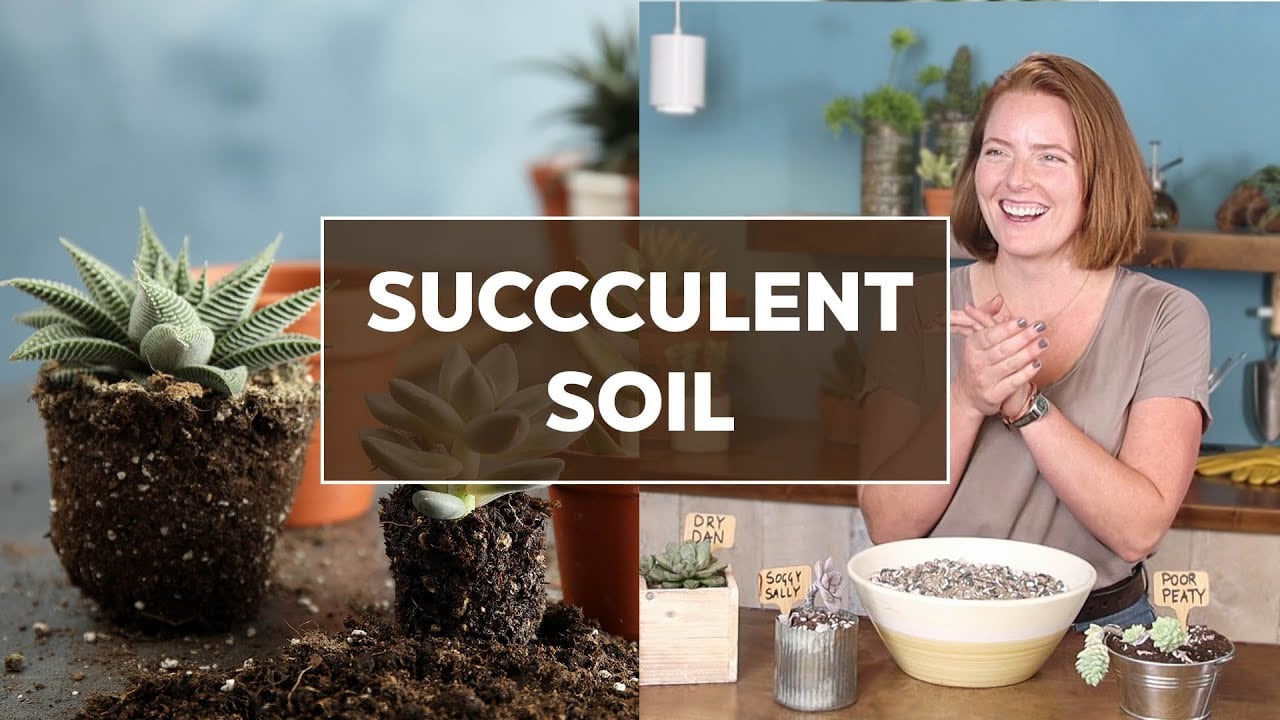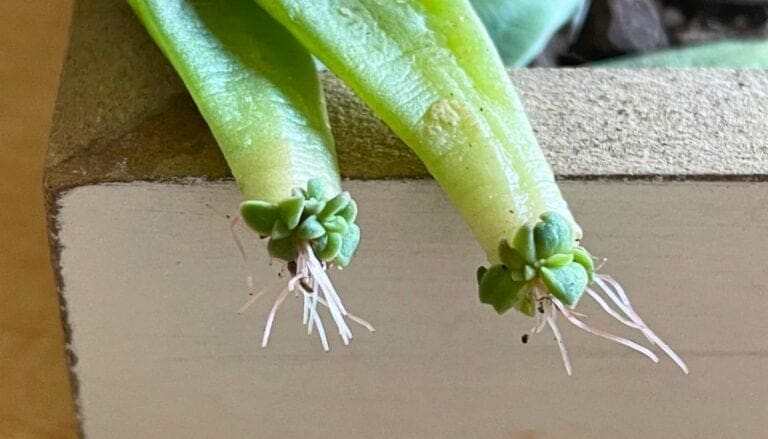7 Tips to Transplant Succulents: Master the Art with Ease
Transplanting succulents can seem a bit intimidating at first, especially if you’re worried about harming your plants. 🌵
Succulents have special needs that can make them tricky to handle.
Knowing how to transplant them properly ensures they thrive in their new homes.
With a little care, anyone can do it!
When I started moving my succulents from pot to pot, I learned a few tricks to make the process smoother.
It’s all about giving them a gentle touch and the right environment.
Do you have a favorite succulent that could use a new pot?
Let’s dig in and make those plants happy together! 🌿
Feel free to share your transplanting stories in the comments below.
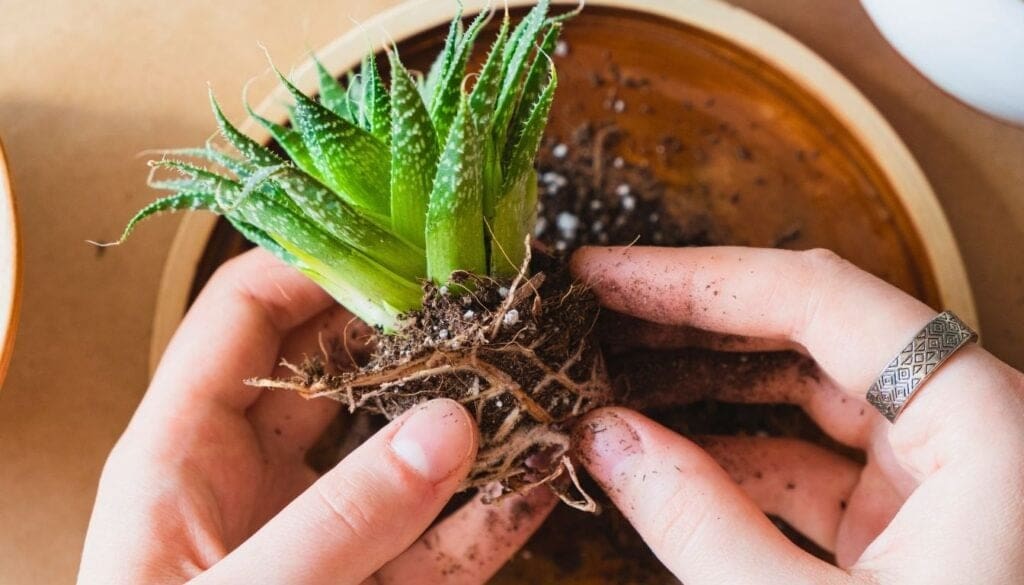
Please note: Simplify Plants is reader-supported. As an Amazon Associate, I earn from qualifying purchases made by our readers with no extra cost added to you all! Some links in the post are affiliate links and I get a commission from purchases made through links in the post.
1) Choose the Right Soil
I love succulents because they’re low-maintenance and full of character. To keep them happy, the right soil is key.
Regular garden soil won’t work since it holds too much water. Succulents need a fast-draining soil mix. Think “desert-like” for your little green buddies! 🌵
When I first started with succulents, I tried using standard potting soil. Oops! My succulents were less than thrilled.
I learned the hard way that special soil mix is a must.
You can find mixes made for succulents at garden centers or make your own.
If you’re into DIY, try mixing sand, perlite, and a bit of compost. This blend helps water drain fast, which is just what succulents need.
Trust me—your succulents will thank you! 😊
Have you ever noticed how messy succulents can get if they sit in wet soil?
It’s like wearing soggy sneakers that never dry! Avoid that by ensuring your soil is dry in-between waterings.
Got any succulent soil tips or favorite mixes? Share them in the comments. I’d love to hear about your experiences! 🚀
2) Gently Remove the Succulent
It’s transplant time, and I’m about to share how to gently remove your succulent.
It’s all about being soft and caring. 😊
Start by loosening the soil around the plant. I usually use my fingers to do this.
Do you feel the urge to yank it out? Resist! Your succulent will thank you.
I like to tilt the pot a bit, giving the plant a little nudge. This helps it slide out smoothly.
If it’s looking stubborn, a gentle tap on the pot’s base can be a lifesaver.
Remember, the roots are like a succulent’s lifeline. We want to avoid damaging them, right?
Keep an eye out for tangled roots. If you spot any, gently tease them apart before moving on.
By the way, have you ever accidentally pulled too hard? I sure have!
Don’t worry if a leaf falls off—these tough little plants are survivors. You can even try planting the fallen leaf to grow a new one. It’s like magic! 🌱
Why not share any funny mishaps you’ve had while transplanting? I’d love to hear about it. Let’s chat in the comments! 👇
3) Let the Roots Air Out

When I’m getting ready to transplant my succulents, I always let the roots breathe for a bit. 🌿
After removing them from their current pot, I shake off as much old soil as possible. It feels like giving them a fresh start. Don’t you think they deserve that?
Why do I do this, you ask? Well, letting the roots air out helps to dry any moisture. This can prevent root rot later. Nobody wants that!
So, I usually leave them in a nice, shady spot for a day or two. Do you do the same? 🕒
Taking the extra time to air out roots helps me to check their condition too.
I inspect for any signs of damage or rot. When I find unhealthy roots, I trim them with clean scissors. It’s like giving the plant a new haircut! ✂️
Have I turned you into a “root-airing” fan yet?
If you’ve got your own tips or tricks, I’d love to hear them. Feel free to drop your thoughts in the comments below! 💬
4) Plant at the Same Depth
When it’s time to transplant your succulents, keep them at the same depth as they were in their original pot.
This helps them settle quickly and maintain their healthy growth. 🌱
Why is this important?
Imagine if someone suddenly changed your mattress’s height without you noticing. Weird, right? 😊
Succulents feel the same. Keeping them at the same height in their new pot helps them adjust better.
I always like to make a little imprint in the soil to ensure the plant goes back to its familiar depth. It’s like leaving a comfy, familiar spot for them. Have you ever tried this? It works wonders!
If you’re worried about roots being too crowded or a plant looking too tall, gently spread some soil around, keeping it at the same core level. This ensures the plant remains happy and gets the support it needs without feeling cramped. ✨
Have you ever noticed roots poking out of a pot? It’s a sign the plant might be too deep or pot-bound. Keeping them at the same depth avoids this issue. Plus, it makes for a neat presentation!
Do you have any tips or stories about transplanting succulents? I’d love to hear all about your experiences. Drop a comment below! 🤗
5) Water Sparingly Initially

When you first transplant succulents, hold back on the water!
It’s tempting to shower them with love, but less is more. 🌵
Trust me, these plants like a little dry spell to settle in.
Why not test your patience a bit? 😄
I always find it fun to see how they adjust to their new home without much water. Let them settle their roots in peace.
Remember, overwatering can easily lead to problems like root rot. No one wants that, right?
Keep the soil lightly moist, but only once they’ve had time to adjust to their new spot.
I once over-loved a succulent by watering it too soon. It didn’t end well! 😅
So take it from me, wait at least a week or two before you water them post-transplant.
What about you? Have you tried letting your succulents get a bit thirsty at first? Share your stories and tips in the comments! 💬 I’d love to hear how others manage this.
🌿 Catch you in the next section!
6) Avoid Direct Sunlight
I’ve learned the hard way that too much sunlight can be a bit of a disaster for succulents. 🌞
They might love the sun, but direct sunlight can scorch their leaves and leave them looking sad.
Imagine wearing a winter coat on a beach day — not fun, right?
When I moved my succulents, I made sure they were cozy in a spot with indirect sunlight.
Near a bright window, but not right on the sill, is perfect. This way, they get just the right amount of light without the burn. Do you have a favorite sunny spot for yours?
If you notice the leaves turning brown or crispy, that’s a sign they need less sun. 😬
It’s like your plant is waving a little white flag! Has this happened to your succulents before?
Sometimes I use a sheer curtain to give them a little shade. It’s like putting up an umbrella on a hot day. 🌤️ Have you tried this trick?
I’d love to hear about your sunny adventures with succulents! Feel free to share your tips in the comments. Have any plants that love soaking up the rays? Let’s chat! 💬
7) Use Appropriate Containers
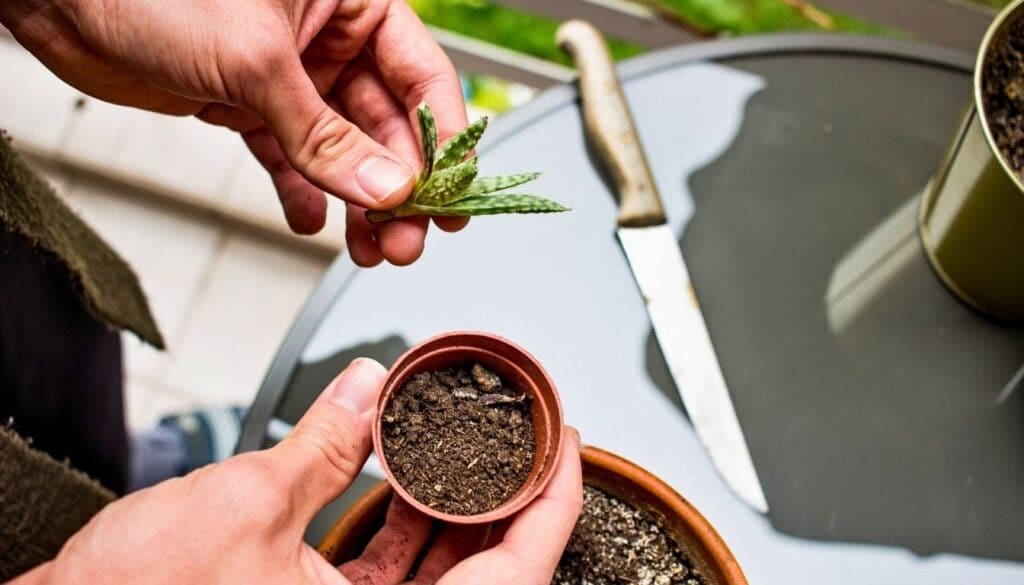
Choosing the right container for succulents is super important. 🌵
I always go for pots with good drainage. If water lingers too long at the roots, succulents can get soggy and unhappy. Is there anything worse than an overwatered plant?
I prefer containers with holes at the bottom. This lets water escape easily.
If you spot a container without holes that you love, no worries! You can add holes yourself or use it as a decorative outer pot. Just place the succulents in a smaller pot inside.
Size matters when picking a pot!
I don’t choose one that’s too big because that can lead to overwatering. The pot should be just a little bigger than the roots. This way, the plant can settle in and grow comfortably. 🪴
Materials count too.
I find terra cotta pots are great since they dry out quickly. They look pretty cool too.
Do you prefer a more modern look?
Consider using ceramic or glass pots for a sleek style. They can add a nice touch to any room.
Let’s talk style! Matching your container to your home decor can really make a difference.
I mix rustic and modern for a fun vibe. What’s your style? Share in the comments! 😊
Understanding Succulent Transplanting
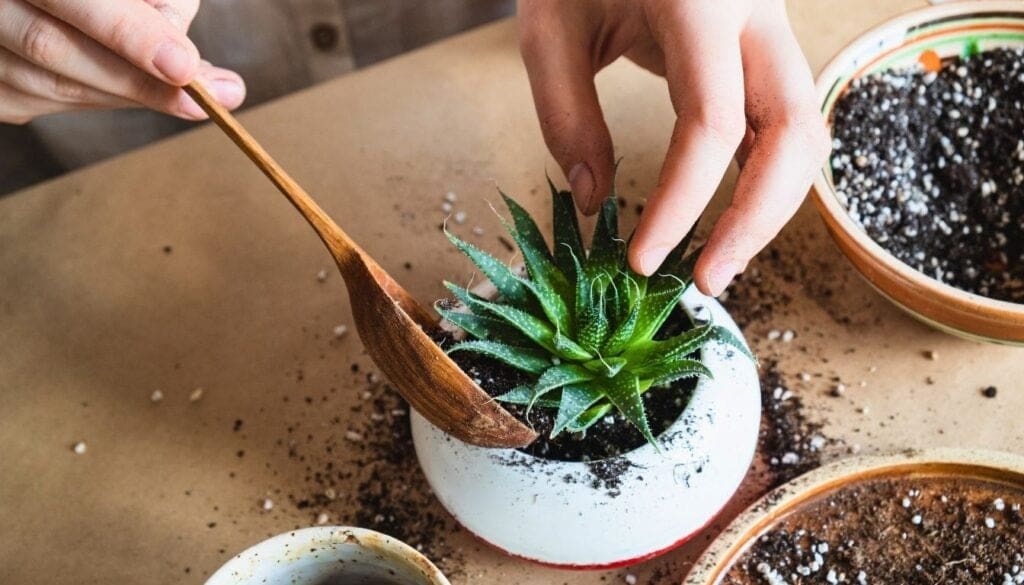
I love working with succulents because they’re such sturdy little plants. Today, I’m sharing tips on when to transplant and why it’s important.
When to Transplant Succulents
Timing is key! I usually check the plant’s roots. If you see roots poking out of the pot, it’s time for a move. 🌱
Another hint? If your succulent looks cramped or stops growing, it might need more room to spread out.
Spring is the perfect season since the plants are generally in their growth phase. I avoid transplanting during winter when they’re dormant. Are you noticing any signs in your succulents? Let me know!
Why Transplanting is Important
Transplanting might seem like a chore, but it’s essential for a healthy succulent. Like anyone else, these plants need some space! 🌿
When roots get overcrowded, they can’t absorb water and nutrients properly.
The right-sized pot helps in providing good drainage, preventing root rot.
I’ve noticed that after a good transplant, my succulents look so much happier. Do you transplant your succulents regularly? I’d love to hear your thoughts! 🪴
Don’t forget to share your experiences or ask questions in the comments. Let’s help each other grow the best succulents around! 😊
Preparing Your Succulents for Transplant
Getting your succulents ready is key to a successful transplant. I’ll break down how to choose the best soil and find the perfect pot, ensuring your plants thrive in their new home. 🌿
Choosing the Right Soil
When it comes to soil, succulents are a bit picky.
Have you ever noticed how they love a good soak and dry routine?
That’s why well-draining soil is essential. Regular potting soil holds too much water and can cause root rot. This can spell disaster for these water-retaining wonders.
Mix your soil with sand, perlite, or pumice to improve drainage. Many garden centers even sell pre-mixed succulent soil.
Testing whether this mix drains well is simple. After watering, the soil should dry out in 2-3 days. If it stays wet longer, tweak your mix.
Got any preferred soil mixes? Share them below! 🌱
Selecting an Appropriate Pot
Picking the right pot involves more than just aesthetics.
Succulents prefer pots with drainage holes. This helps excess water escape, which is crucial given their dislike for soggy feet.
Nobody wants unhappy roots! 🌧️
Consider the size as well.
While it might be tempting to give your succulent a mansion of a pot, smaller is usually better.
A pot just slightly larger than the plant allows room for growth without drowning it in unused soil.
For a fun twist, I sometimes use old teacups or tins (with holes drilled) to add character.
Have a crafty potting idea? I’d love to hear it! 🌸
Drop your transplant tips or questions in the comments! 🪴💬
Post-Transplant Care

Taking care of your succulents after transplanting is just as important as the process itself.
Proper watering and keeping an eye on pests can keep your plants healthy and flourishing.
Watering Guidelines
After transplanting, wait a few days before watering.
Succulents need time to adjust to their new home. How long to wait depends on the size of the plant.
A small succulent might need a day or two, while larger ones may need up to a week.
Once they’re settled, this is the best part: water lightly.
Instead of soaking the soil, just give it enough to get slightly damp.
Imagine you’re giving your succulent a little sip.
Too much water can lead to root rot, and nobody wants that!
Does anyone out there love watching ice cubes melt? 😂
Some folks use one or two ice cubes on the soil to control the amount of water—just be sure it works for your succulent species.
Monitoring for Pests
Just like us, succulents hate uninvited guests!
Watch out for pests such as mealybugs or spider mites. They can sneak in, especially after you’ve moved things around.
If you spot any little critters, grab a soft brush or a cotton swab dipped in alcohol to gently remove them.
It’s like playing detective: search every nook and cranny of your plant.
Sometimes, I sprinkle a little cinnamon powder on the soil.
Not only does it smell nice, but it’s also a natural pest repellent! 🍃
I love hearing about all the wild and wacky ways people pamper their plants!
Do you have any tips that work wonders for your succulents? Share your ideas, and let’s chat about keeping these little green folks happy! 🌵😊
Frequently Asked Questions
Transplanting succulents can be fun and easy if you know the tricks! From preparing cuttings to picking the perfect soil, let’s dive into these common questions. 🌵✨
Got your own tips or questions? Share them in the comments!
How do you prepare succulent cuttings for transplantation?
I like to let cuttings dry for a few days.
This helps them form a callous over the cut end. Doing this protects against rot and ensures healthier growth.
What is the best soil mix when repotting succulents?
Succulents love well-draining soil.
I usually mix cactus soil with some coarse sand or perlite. This keeps the roots happy and prevents water from pooling. 🪴
How should succulents be watered after transplantation?
It’s tempting to water right away, but I give my succulents a few days to settle in their new home.
After that, a light watering is enough. Too much water can be a bad thing!
What are the signs that a succulent needs to be transplanted?
If it looks overcrowded in the pot or has roots peeking out, it might be time.
I also keep an eye out if it’s not growing like it used to.
Can you replant a succulent without roots, and how?
Yes, you can! I’ve done it plenty of times.
Place the stem cutting in dry soil and wait. Be patient! New roots should appear with a bit of time and care.
What are the best practices for transplanting tall or leggy succulents?
These need some extra care. I trim them before transplanting to improve future growth.
Support sticks can help until they stabilize.
Ever had a leggy succulent saga of your own? Let’s hear it!
Recommended Garden Supplies
| Product Image | Our Recommended Gardening Supplies | Check Offers! |
|---|---|---|
Top Top
Top
Top
Top
Top
Top
Top
Top | rePotme Houseplant and Tropical Classic Potting Soil Mix | Check Offer On Amazon |
 Top
Top
Top
Top
Top
Top
Top
Top | Espoma Organic Indoor Plant Food | Check Offer On Amazon |
 Top
Top
Top
Top
Top
Top
Top
Top | GooingTop LED Grow Light 6000K Full Spectrum Clip Plant Growing Lamp | Check Offer On Amazon |
 Top
Top
Top
Top
Top
Top
Top
Top | Soil Moisture Meter | Check Offer On Amazon |
 Top
Top
Top
Top
Top
Top
Top
Top | Govee Hygrometer Thermometer, Bluetooth Enabled! | Check Offer On Amazon |
 Top
Top | LEVOIT Humidifiers for Large Room(Best For Plants) | Check Offer On Amazon |
 Top
Top
Top
Top
Top
Top
Top
Top | Upgraded DIY Automatic Drip Irrigation Kit, 15 Potted Houseplants Support | Check Offer On Amazon |
 Top
Top
Top
Top
Top
Top
Top
Top | Stainless Steel Heavy Duty Gardening Tool Set | Check Offer On Amazon |
 Top
Top
Top
Top
Top
Top
Top
Top | Bonide Insecticidal Soap | Check Offer On Amazon |
 Top
Top
Top
Top
Top
Top
Top
Top | Bonide 32 oz Spray Neem Oil for Organic Gardening | Check Offer On Amazon |
 Top
Top
Top
Top
Top
Top
Top
Top | Garden Safe Fungicide | Check Offer On Amazon |

